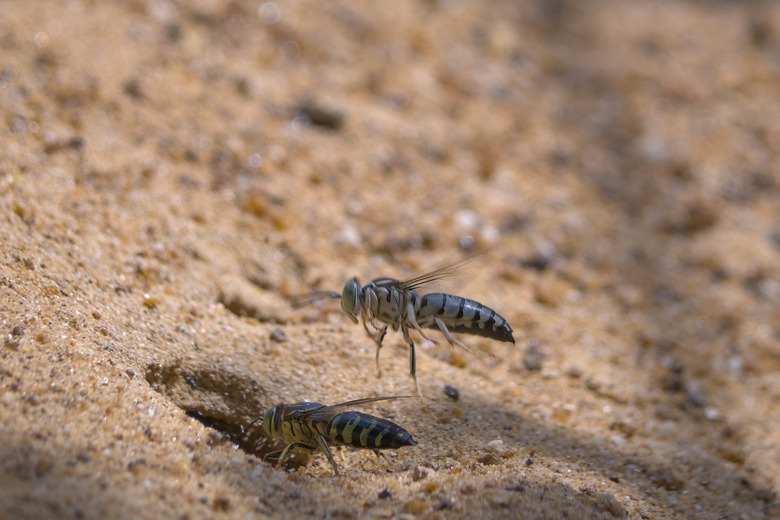How To Get Rid Of Sand Wasps
We may receive a commission on purchases made from links.
Discovering sand wasps in your lawn is a good news/bad news situation. The good news is that sand wasps are fairly harmless. They can sting if they're stepped on or roughly handled, but these pacifist insects won't come after you. If you ignore them, they will return the favor.
The bad news is that sand wasps are solitary creatures. Each female digs her own nest and takes care of it rather than living in a community like other wasps. They don't mind living in close quarters with their neighbors, however, and as such, hundreds of sand wasps can live in a small area, making it look like there is a large wasp nest nearby. Because they don't share nests, treating a large group of wasps is tricky.
Using Insecticides on Sand Wasps
Using Insecticides on Sand Wasps
You can kill sand wasps using permethrin dust or spray, but it's no easy task. Ideally, you should wait until the evening when queens are most likely to be in their nest and dust the entrance with insecticide. If you've noticed several wasps, look around carefully for nest openings and dust every one that you find.
Unfortunately, it's not unusual to find hundreds of sand wasps in a given area. In that case, it's unrealistic to try to dust every nest. Instead, you will want to broadcast the insecticidal dust over the entire area where you see the wasps. Always read the label first and make sure the pesticide you've chosen is safe to use in this way. If the sand you're cleaning is a children's sandbox or if it's in an area that children and pets frequent, skip the insecticidal dust and choose other options.
Plants and Other Cover
Plants and Other Cover
Sand wasps like sand mounds in sunny areas without much vegetation. One way to discourage them is to plant something. Grass, ground cover, or other plants living in the sand will deter them. If the affected sand is under a swing set or in a child's play area, consider swapping it out for topsoil or mulch. Sand wasps won't live in these substances.
A tarp or sandbox cover can also work. This is a simple way to keep wasps out of the sand. Frequent raking works as well by disturbing and destroying the queen's carefully crafted tunnels. If you cover a sandbox, for instance, and then rake it before or after each use, the female sand wasps will nest elsewhere, and the males will follow them.
Live and Let Live
Live and Let Live
Before you go on a seek and destroy mission looking for sand wasps, consider that they might be helping you. Sand wasps eat flies, so they may be greatly reducing the fly population in your yard, which means fewer flies getting into the house. Sand wasps look intimidating, but these beneficial insects will work around you rather than chase you out of their territory.
If you have kids and pets who might disturb the wasps, eliminating them might be your best option. Be sure to think it over first, however, as there may not be a compelling need to get rid of them.
